#decomposition book
Text


This has been a rough year for my journaling thus far. Been mostly using smaller pocket notebooks so they're less stressful to fill.
#notebook#notebooks#journal#journals#journaling#decomposition book#junk journal#junk journaling#scrapbooks#scrapbook#scrapbooking
98 notes
·
View notes
Text
Speaking of being a prissy handwriter who uses fountain pens, I wanted so bad to like decomposition books, because sustainability and awesome cover artwork, and I bought two of their spiral bound notebooks, but holy shit they have the worst fuckig paper. They suck the ink out of my fountain pen like a vacuum cleaner, and the bleed through and spreading is just shocking. I hate it, I hate it, I hate it.
#a s fischer original#it's probably fine for ballpoint pens but I hate ballpoint pens and always have#these are so much worse than your average grocery store notebook#decomposition book
8 notes
·
View notes
Text
The third process of decomposition is adipocere, a rare chemical change in the body’s saturated fat, which hydrolyses it, stiffening and swelling it into a waxy compound, a bit like soap. It is sometimes called ‘corpse wax’ or ‘the wax of graveyards’. Basically, the body, or part of it, is preserved, looking as though it is a waxwork.
In the UK, the process of adipocere formation takes about six months – although I have heard of a case just three weeks after death that presumably was aided by the sun’s heat and the warmth of maggot infestation.
Adipocere requires damp conditions. In its early stages, when the fat is hydrolysed into a greasy semi-fluid, the rancid smell is terrible. But, as the process progresses, the fat becomes brittle and paler and when the adipocere is fully formed it is grey and firm.
The phenomenon of adipocere has been documented for many years and it can last literally centuries. Otzi, the Neolithic hunter known as the ‘Glacier Man’, whose body is on display in Bolzano in the Italian Dolomites, was probably at least partly preserved this way. In the eighteenth century, excavations at the Cimetière des Innocents in Paris allegedly yielded tonnes of adipocere, and it was promptly put to use by the city’s soap- and candle-makers. There were some famous cases in the 1970s from Australia where the process perfectly preserved the form if not the contents of divers’ bodies found about a year after they drowned due to equipment failure as they explored a deep freshwater lake.
On occasions, adipocere has revealed a cause of death, perfectly reproducing injuries like bullet holes or preserving the fat in certain organs. In general, it is more commonly found in women, the well-nourished and the obese, but conditions have to be right – usually the body must have been submerged in water anaerobically or buried in a damp grave, especially if there is no coffin and especially if the deceased is wearing natural and not synthetic fibres. Its formation can be influenced by the season, the depth of the grave, coffin composition, the soil and the local insect activity.
Unnatural Causes: The Life and Many Deaths of Britain’s Top Forensic Pathologist Unnatural Causes (Dr. Richard Shepherd)
#Unnatural Causes: The Life and Many Deaths of Britain's Top Forensic Pathologist#Unnatural Causes#UC Chapter 11#Dr. Richard Shepherd#forensics#pathology#decomposition#adipocere#writing reference#history#V#books#quotes
15 notes
·
View notes
Photo



Maggots, 1986 (details) Cover art by Terry Oakes
#Terry Oakes#art#maggots#g o r e#decomposition#worms#devoured by vermin#80's#80s#1986#artwork#painting#details#detail#death#dead#rotten#Blerghhhh!#cover#cover books#cover art
119 notes
·
View notes
Text
Figure 9.2 shows how the concentrations of the two gases change over time as pure N2O4(g) is converted into an equilibrium mixture of N2O4(g) and NO2(g).
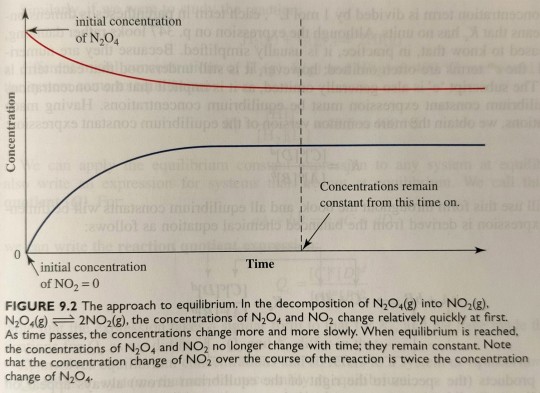
"Chemistry" 2e - Blackman, A., Bottle, S., Schmid, S., Mocerino, M., Wille, U.
#book quotes#chemistry#nonfiction#textbook#equilibrium#decomposition#nitrogen#oxygen#dinitrogen tetroxide#nitrogen dioxide
10 notes
·
View notes
Text
Although the body appears free of decay immediately after death, there are bacteria inside that feed off the contents of the intestines.
When the body dies, the bacteria start eating the intestine itself. Eventually, they eat their way out of the intestine and start eating the surrounding organs. Certain flies (if you are interested in who these chaps are, I refer you to the blowfly, the bottle fly, and the common house fly) can pick up the scent of death as if they knew beforehand that a life was about to be extinguished. They are not fussy: natural causes, suicide, murder—it means nothing to the fly. They arrive on the scene within minutes to deposit their eggs in the still-tender flesh that will nurture the eggs until they hatch. They go for openings—nostrils, ears, eyes, or wounds.
Once the flies have housed their eggs, it would normally take about eight to fifteen hours for the eggs to hatch (although this varies according to temperature). It takes a similar amount of time for the first larvae to develop. They feed on liquid protein. Once fully developed, they spend a few days dining on the delicacies of the flesh, using their sharp-hooked mouths to tear at it. Another week and the maggots complete their growth and leave the body to become pupae, soon themselves to become airborne, dive-bombing flies planting their own eggs to start the next generation. The cycle from egg to maggot to fly takes from two to three weeks.
A pack of maggots can devour human tissue at startling speed. When they swarm, they dive into the flesh and rip away at it, then wiggle to the top of the swarm for air before they dive back again for another mouthful. It’s a frenzied pack, maggots going up and maggots going down. The heat produced by the all-consuming pack is enough to maintain larvae growth at low temperatures.
The bacteria are also at work breaking down tissues and cells. Fluids are released into body cavities and various gases are produced: hydrogen sulfide, methane, cadaverine, and putrescine. The gases intensify the growth of the bacteria, which in turn creates a pressure buildup. This pressure inflates the body and forces fluids out of cells and blood vessels and into the body cavity. The decay process gathers speed as it goes. The fluids and gases that leak from the body attract even more blowflies, flesh flies, beetles, and mites. Some of the latecomers are themselves predatory, and eat the maggots as well as the rotting flesh.
By week two, the body will probably collapse. Exposed body parts and flesh are blackened, and the smell is intense. Large amounts of body fluids seep out, attracting other insects to feed. At this point, there are generally several generations of insects feeding on the body.
15 notes
·
View notes
Text

And so I told her with all the force of my genius the secret. God’s great secret that generations of Masons had sought but I alone had composed: that the key to eternal life was not in preserving the body but in severing the very soul.
#she was soooo crazy for this shit.#my art#art#procreate#franz liszt#frederic chopin#Decompositions in A Major#if you all don’t read this book NOW i’ll lose my shit
26 notes
·
View notes
Text
CALIFORNIA JOSHUA TREE
Sometimes you visit corpses all around the world and realize that the corpses dearest to your heart are right in your own backyard. When I returned to Los Angeles, my funeral home awaited—along with my long-suffering funeral director, Amber, who facilitated cremations and comforted distraught families while I was off requesting help with mutual funds from a Bolivian skull.
Undertaking LA had an un-embalmed, natural burial scheduled for Mrs. Shepard. Inspired by what I had seen on my travels, I returned to work with a new sense of purpose. In my mind, the grieving family would prepare the body with love, wrapping the dead woman in a handmade shroud lined with peacock feathers and palm fronds. We’d lead a procession to the grave at dawn, carrying candles and scattering flower petals, chanting as we went.
This burial—well—wasn’t like that.
By the time we got Mrs. Shepard into our body preparation room, she had been dead for six weeks, trapped in a plastic body bag under refrigeration at the L.A. coroner’s office. Amber and I stood on either side of her as we unzipped her bag. Mold had begun to grow under her eyes, and carried down her neck and onto her shoulders. Her stomach was collapsed, colored deep aquamarine (brought on by the decomposition of the red blood cells). The top layers of skin peeled free from her calves. The bag had been swamplike, bathing Mrs. Shepard in her own blood and bodily fluid.
We released her from the plastic prison and washed her body down, soapy water sliding down the steel table and disappearing through a small hole near her feet. Amber washed her hair, originally white but now dyed brown with blood, doing her best to work around the patches of mold growing on her scalp. We labored in silence, something about the decayed state of the body making us less vocal than usual. After patting Mrs. Shepard dry, it was clear that she was not done leaking. If Undertaking LA were a typical mortuary, we’d have all types of tricks up our sleeves (Saran Wrap, diapers, chemical powders, even head-to-toe plastic body suits) to combat the aptly named “leakage.” But a natural cemetery won’t accept a body for burial that has been treated with any of those chemical leakage treatments.
We moved Mrs. Shepard straight into her shroud, hoping to wrap her enough times that she wouldn’t ooze through. Amber had sewn the shroud herself from unbleached cotton fabric. The family had little money, and we were trying to bring down costs everywhere we could. The day before, I had received a text from Amber: a picture of a receipt from JoAnn’s Fabrics with the caption, “Guess who just saved the family 40% on their burial shroud with JoAnn’s points!” The finished product was charming, complete with ties and handles (though no peacock feathers or palm fronds).
— From Here to Eternity: Traveling the World to Find the Good Death, Caitlin Doughty
#cw graphic#cw death#decomposition#Caitlin Doughty#Ask a Mortician#From Here to Eternity: Traveling the World to Find the Good Death#From Here to Eternity#books#bookblr#death positive#death positive movement#nonfiction#science#history#travel#anthropology#memoir#sociology#atypicalreads#deathcare#death acceptance#natural burial
2 notes
·
View notes
Text
i Unfortunately haven't been able to be on here bc i've been so fucking busy but i Have been keeping up with d20 stuff and just. burrow's end is so good for me specifically
#as a hardcore dystopian lover (and i mean yes thg but also like speculative fiction like parable of the sower)#this is so good for me and i cant wait to see how these stoats are animal farm-ing this#i remember there was a video d20 put out before it premiered where aabria said this is basically her graduate thesis i believe?#i cant find the video now but i heard that and i just Know this is going to be great#ill try to find it again if i can when i have time but YESS lets get into the epistemological reasoning these stoats have made to justify i#plus whatevers going on w radiation?? fun times#i do heavily appreciate aabria's ability to do body horror w/o being ableist too!! you dont have to be all#“oooh this thing that Can Happen is horrifying oooh!” NO. MAKE THAT ELK SPIKY#decomposition is Right there. its not a hard bar but for some reason so many ppl become pole vaulters instead of just walking below#does that metaphor make sense? ive been writing so much you guys :( my brain is a little bit melted#this is a direct @ at a certain book btw that is talked about as 'such good body horror and sooo scary." guys it was so bad.#like heavily ableist but also just not written well. eugh :|#anyways. fun times and Heavily looking forward to the next episode. i have to go write more now ;-;#like this is from something i started last night:#''Mrs. Hutchinson's privilege blinds her to the institutional violence and dehumanization in ''The Lottery''#and thus is exploited herself for a gruesome generational ritual.''#i dont love the word exploited and ill probably change it but like. thats the level we're working at. yippee#okokok bye now
5 notes
·
View notes
Text
We all know how moors symbolises a grey area between life and death in wuthering heights. Idk but I think Emily Bronte's whole concept of moors is so beautiful, dangerous and brilliant all at once. And at the end how Nelly mentions that Heathcliff and Catherine still rome the moors is so hauntingly beautiful. Like something straight out of Hozier's songs. And I don't know why people even dare to claim that Wuthering Heights isn't a romance novel. I get it that Heathcliff is an anti-hero and I hate hate hate him but the way Emily Bronte put this whole story and characters on the paper will just want you to provocatively root for Heathcliff till the end. I never learn. I never do. And most importantly how Heathcliff and Catherine both kept saying they will never let another rest and they actually never did. The thing is that they never got to be together in one life so they chose to be together in another. And how Heathcliff just accepted his fate in the end that his life is going to come to an end. It might also be because of how he has waited all this time to be close to Catherine and his whole life he kept punishing everyone possible because he thinks they are somewhere the reason why he couldn't have Catherine.

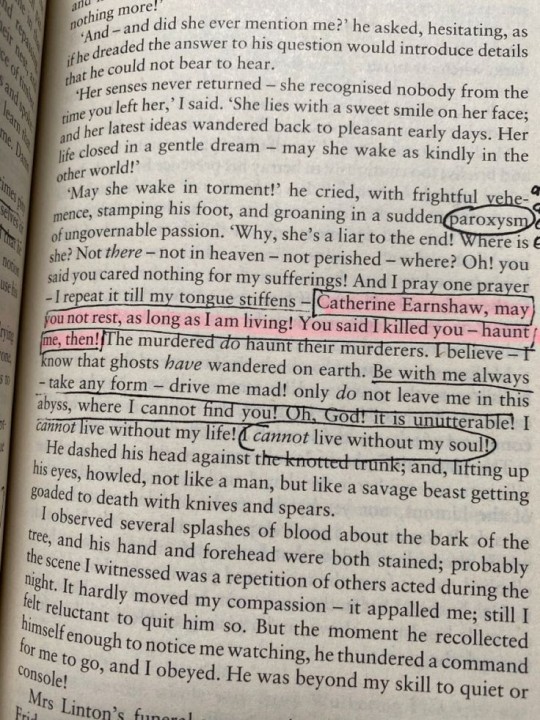
#wuthering heights#classic literature#literature#lit#catherine earnshaw#hot take#emily bronte#hozier#in a week#decomposition#im dying#anti hero#books and reading#books & libraries#books#rant#ranting#love rants
3 notes
·
View notes
Text
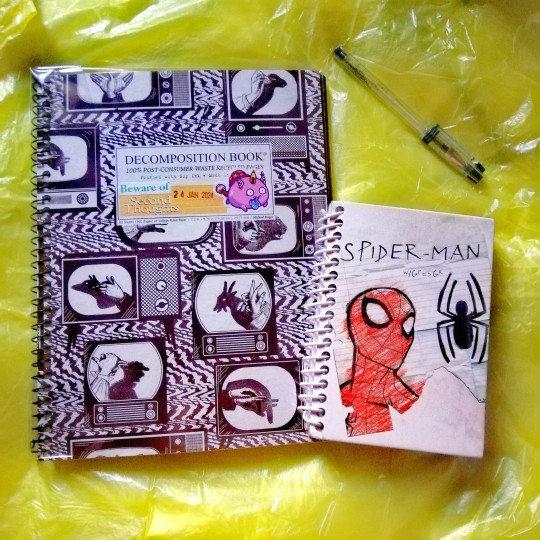
Just finished my last journal and started on a new one! This one's a bit intimidating due to the larger pages, but I'm still excited to break it in.
3 notes
·
View notes
Photo

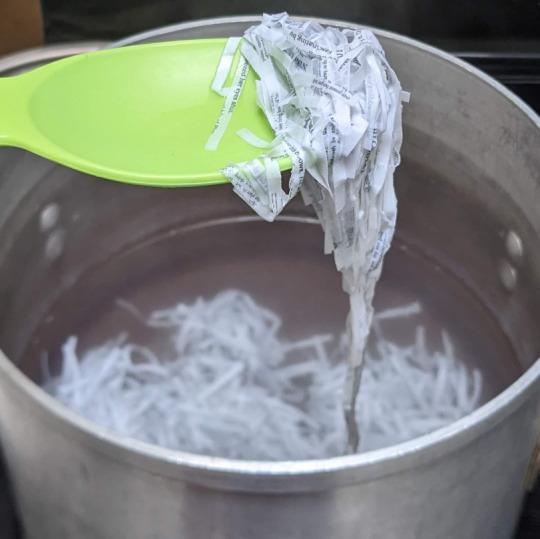
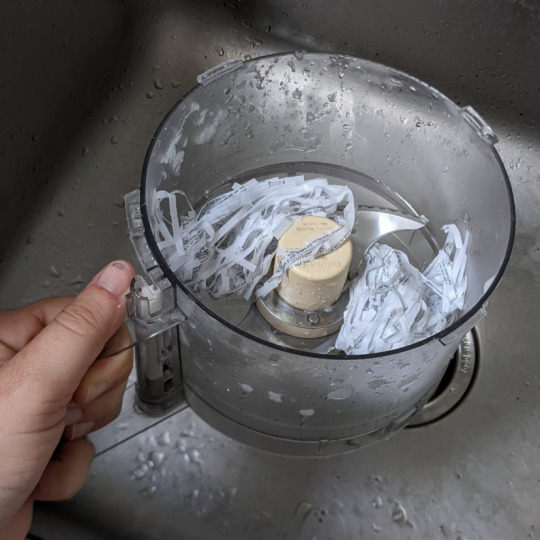

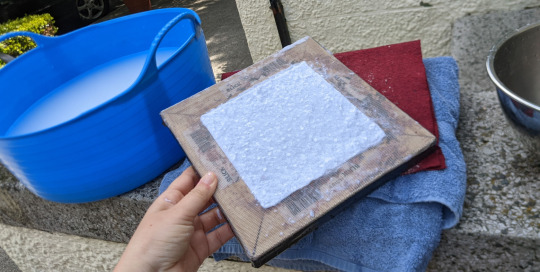
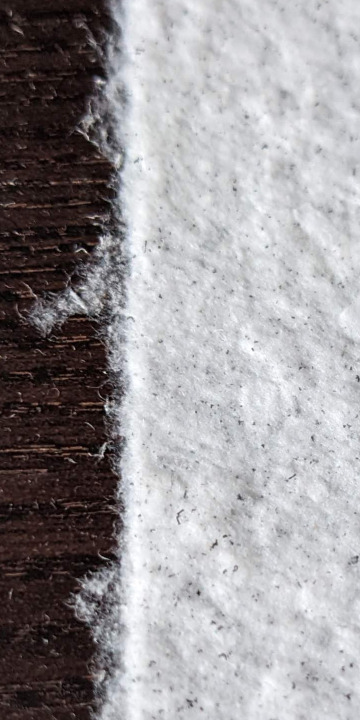
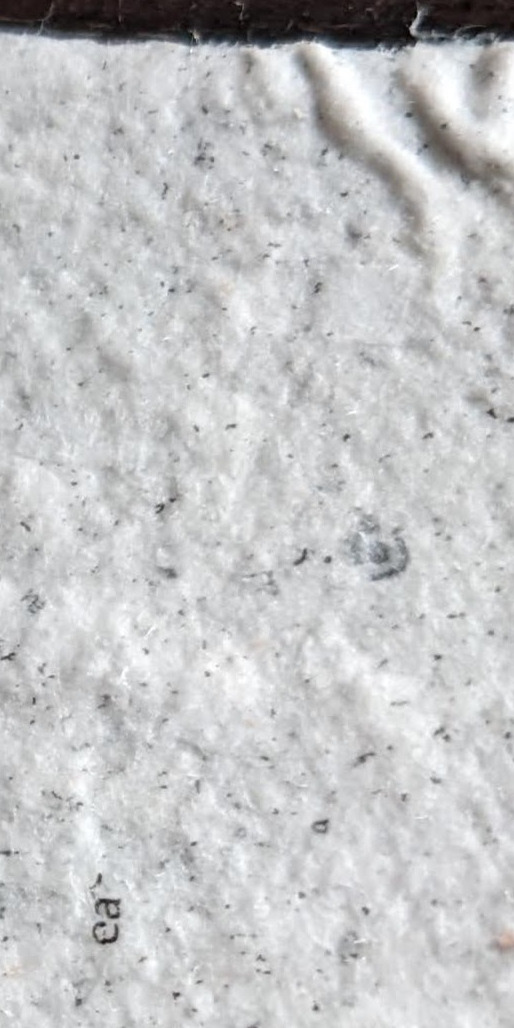
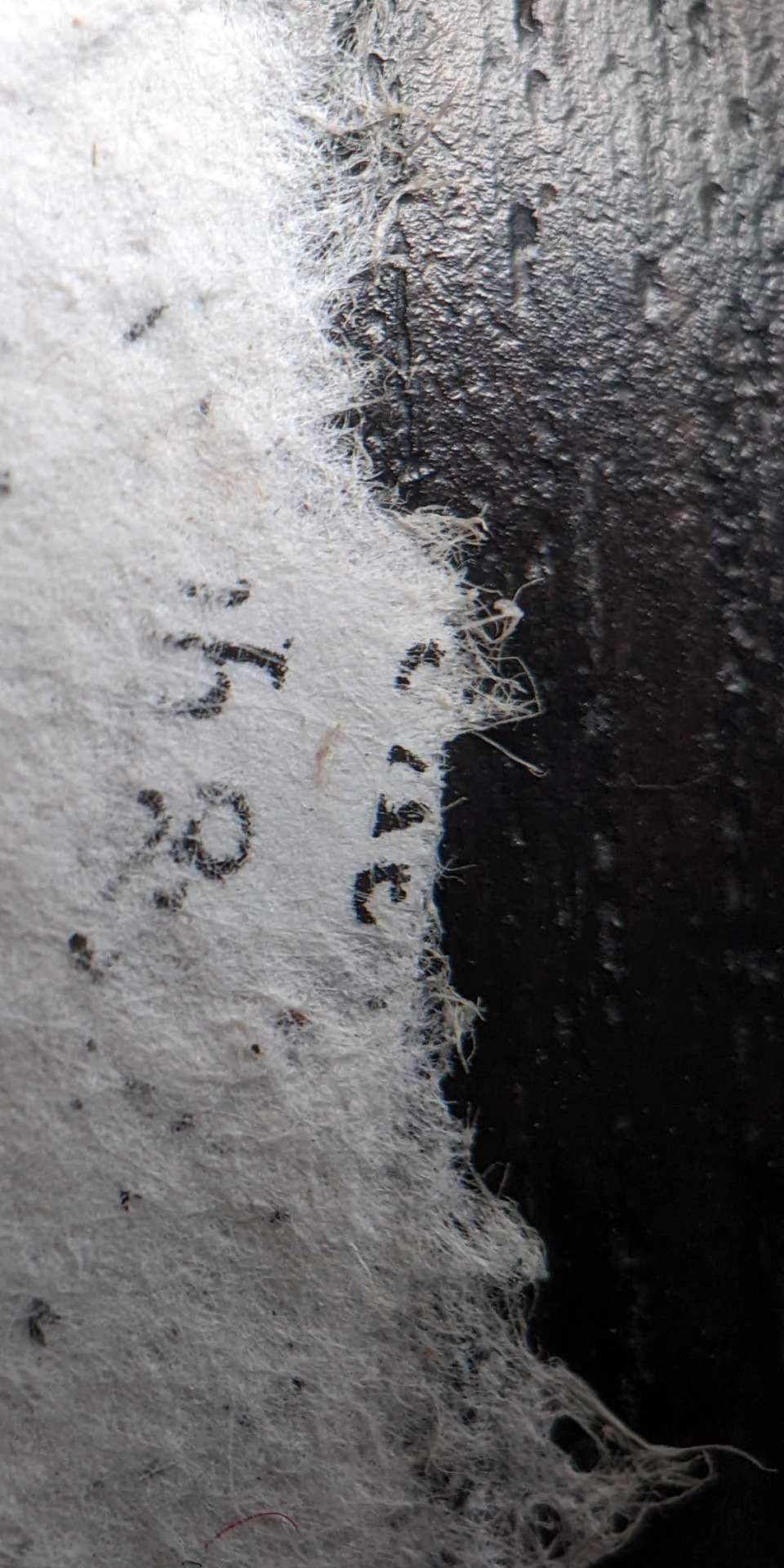
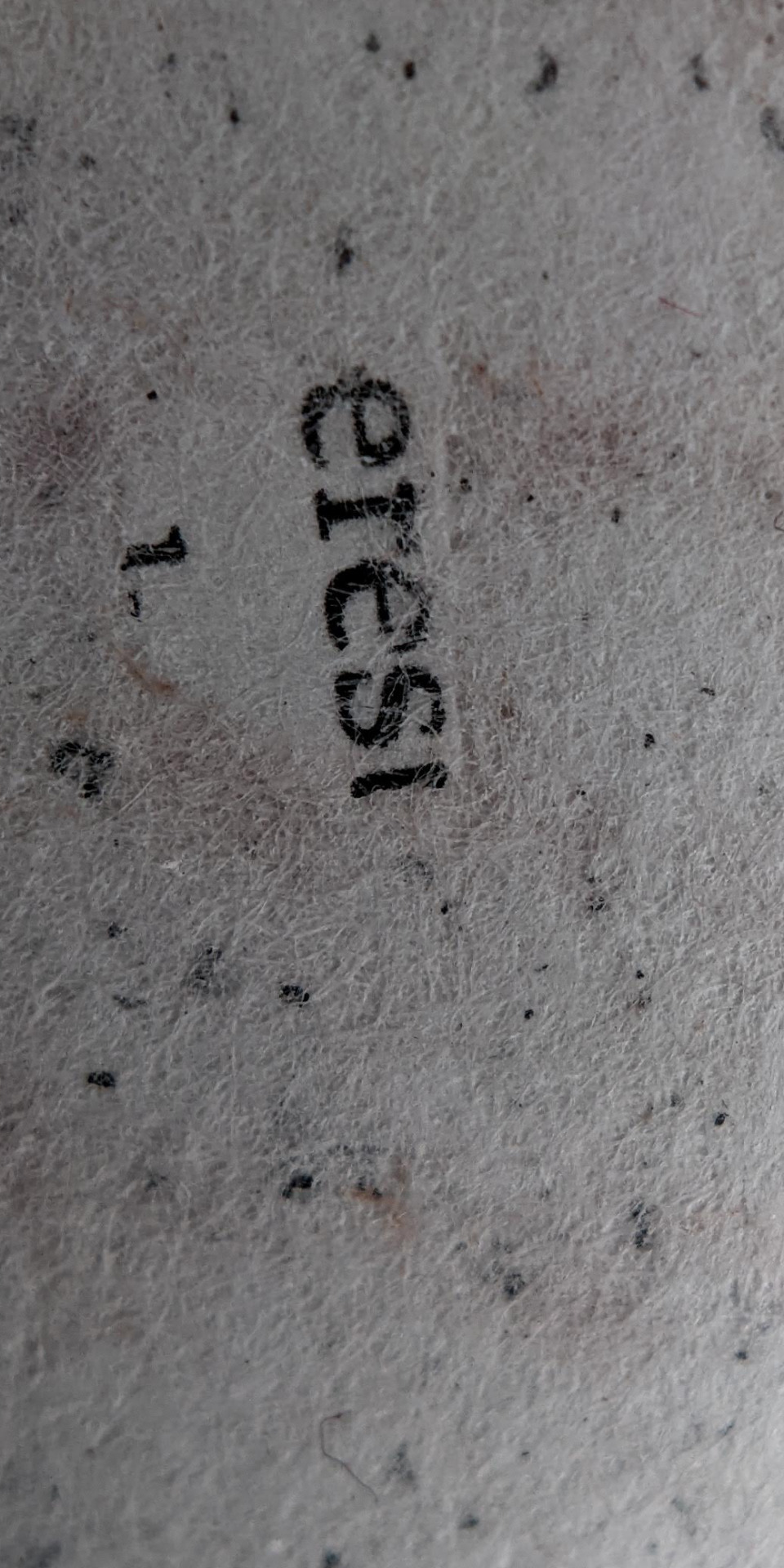
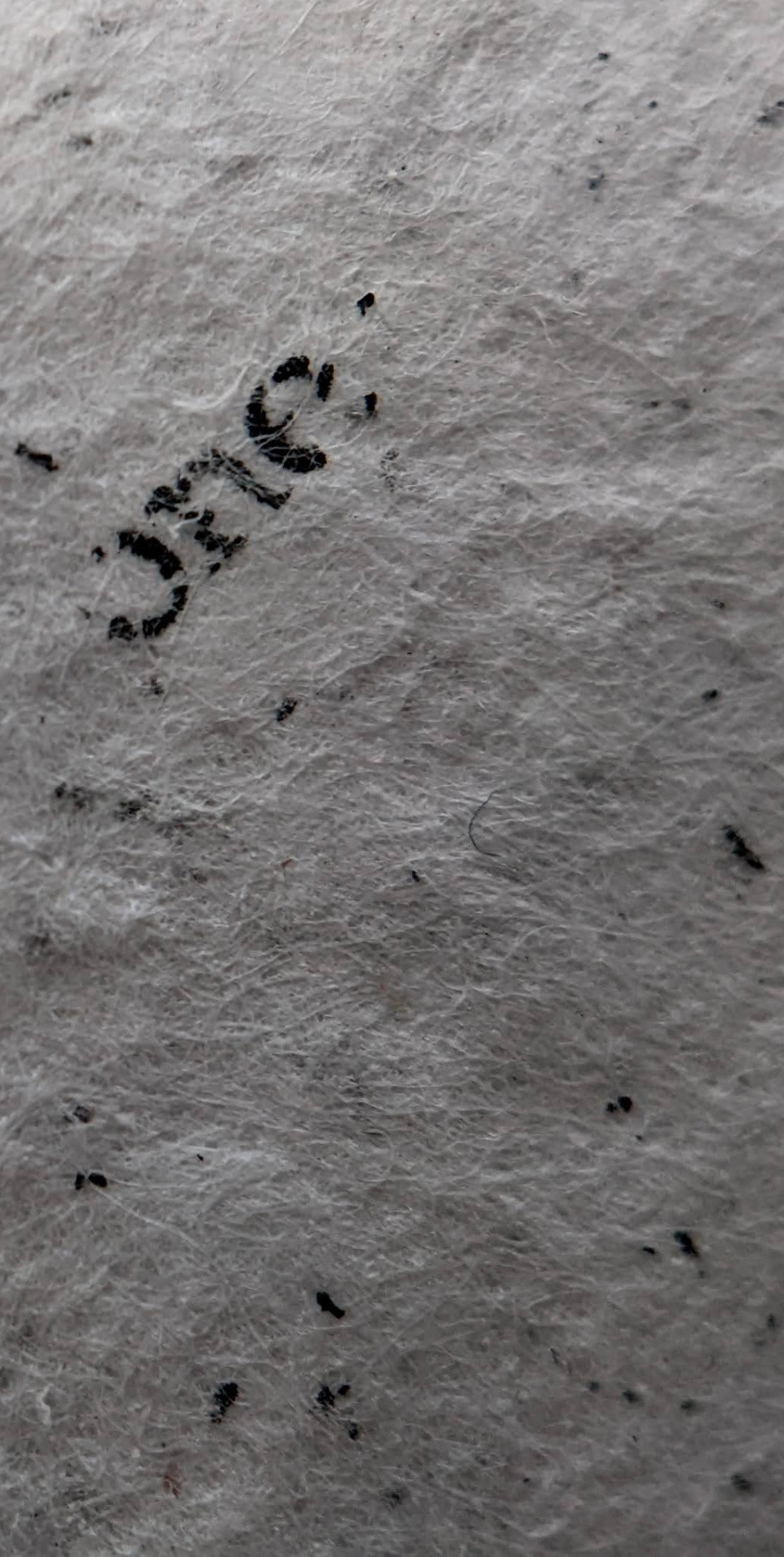
My pile of misprints swelled during February (aka “Binderary”) which called for another batch of paper making. Didn’t bother cleaning my frame and deckle from prior batch of loquat dyed paper, thus the hints of pink here and there in these sheets. (not a good look)
Realized I could work on the stoop rather than crouched at the curb, which greatly improved the experience! While words and letters were visible here and there, the whole batch is rather bland-- think I’ll go back to dyeing them. Maybe eucalyptus next time.
I never press my pages has firmly or as long as I should. The last pair of photos shows the difference between how the flat side (dried against a board) compares to the front surface. Above them are two photos of the freshly made pages-- you can still see the imprint of mesh. Now that I’ve got “an imprint name” I’m tempted to try and sew a watermark into it... maybe next time. Always new ideas to test out!
#paper making#the decomposition of bookbinding failures#'use all parts of the animal' as we like to joke in this household ;)#home made paper kinda' feels like book fungus?#it helps that all my text comes out to be... like... 4pt font on paper#you can catch more full fragments of words at such a scale#macro photography#Macro Monday
31 notes
·
View notes
Text
Burial tends to delay decomposition. In fact, a body above ground is said to decompose at least four times faster than one buried. Under ground, it probably takes two years for the soft tissues to disappear completely. Tendons, ligaments, hair and nails will be identifiable for some time after that. In about five years the bones are bare and disarticulated but there are often fragments of cartilage and, if I use a high- speed saw to cut the bones of bodies that have been exhumed after five years, there is a wisp of smoke caused by scorched protein still in the marrow and the smell of burning organic matter – something I can also expect from the bones of the recently dead.
The human skeleton is the last part of the body to return to the earth, which, of course, can take a very long time: hominid bones more than 2 million years old have been found in dry parts of the world. Unless preserved anaerobically in a bog, the damp UK climate does not keep bones so well. And eventually, all bones must decompose. Wet soils that hold water hasten this by leaching the calcium and other minerals away. As the bone becomes more porous, the process of disintegration is helped by bacteria, fungi and even plants thrusting their roots inside the cracks and crevices and breaking up the bone more – as well as by gnawing animals.
Throughout their careers, pathologists are approached by the police to examine bones. ... Usually just one bone is found, sometimes a collection, and they are nearly always from animals. But not always. All pathologists have files labelled ‘Old Bones’ and every attempt is made to identify these finds. Some bones, like the pelvis or the skull, tell us at a glance whether its owner was male or female. Other bones, and particularly teeth, can tell us the age of the deceased if they were very young or very old. Otherwise, judging age from a skeleton is not a precise science.
For the most part, our ‘Old Bones’ files remain mysterious. Our main task is to date the bones and discover whether this death, possibly a criminal death, occurred in the last sixty or seventy years, in which case the killer might still be alive. Dating is a specialist skill. Carbon-14 dating only works to a very long time-scale but the atomic bombs of the 1940s, with their release of strontium-90 into the atmosphere, mean it is relatively easy to discover whether bones pre- or post-date these explosions. If they predate the atomic era, the police are seldom interested, although archaeologists might be.
Unnatural Causes: The Life and Many Deaths of Britain’s Top Forensic Pathologist Unnatural Causes (Dr. Richard Shepherd)
#Unnatural Causes: The Life and Many Deaths of Britain's Top Forensic Pathologist#Unnatural Causes#UC Chapter 11#Dr. Richard Shepherd#forensics#pathology#decomposition#dating#bones#writing reference#V#books#quotes
11 notes
·
View notes
Photo

Chilling Tales, 1952
#Chilling Tales#1952#50's#50s#Harry Harrison#Illustration#comics#comic art#comic trip#painting#artwork#illustrations#comic book#vintage pulp art#vintage comic books#decomposition#rotten#skeletonization#anatomy#putrefaction
23 notes
·
View notes
Text
rufus wainwright's the maker makes possibly thee only song ever that will never ever ever fail to liquify me instantly....cannot think of any other song that will so reliably dismantle me every single time regardless of my prior mood...there is something in the water...the first plink of the piano i am seeping into the grass like a spilt drink. by the time oh lord how i know oh lord how i see that only can the maker make a happy man of me comes around i'm a Dribble im gum on the pavement my chest is collapsing in on itself. and then? i just have to go about doing little tasks......get Along Little Doggies.....
#i cannot think of. any other song that will make me cry so consistently. as in there are songs that will make me bawl one night and then#will actually be quite pleasant in different circumstances but not the maker makes...all i can think of that maybe also goes in this#category is two slow dancers or fourth of july. not immune to and we've both done it all a hundred times before not immune to#did you get enough love my little dove why do you cry. i think that is genuinely it though maybe he was a friend of mine also#(ridi's) bigmouth strikes again#the maker makes is like. those posts about reading books and then thinking omg why is everyone else not rampantly unhinged about this book#except its a song. like how do you listen to it and not feel some sort of chemical decomposition occurring in your brain. is my question.#rufus wainwright
11 notes
·
View notes
Text
Also upcoming for me after I decide whether or not to buy a cd is whether or not to buy a new style of diary after using the same kind for nine consecutive volumes
2 notes
·
View notes